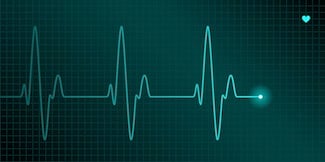Why Stroke Volume Trumps Maximal Heart Rate
 The heart is an involuntary muscle, meaning it cannot be consciously controlled - a person cannot tell a heart to speed up or slow down any more than he or she can decide on the amount of blood pumped in every beat. Endurance training impacts both heart rate and stroke volume, but perhaps not in the way you would expect.
The heart is an involuntary muscle, meaning it cannot be consciously controlled - a person cannot tell a heart to speed up or slow down any more than he or she can decide on the amount of blood pumped in every beat. Endurance training impacts both heart rate and stroke volume, but perhaps not in the way you would expect.
Heart Rate
Heart rate, or beating frequency, is dependent on stimulation from the sympathetic and parasympathetic branches of the Autonomic Nervous System. The sympathetic system is controlled by fight or flight impulses, causing the heart rate to speed up, while the latter is used during rest and recovery periods and causes the heart rate to decrease. Even without any stimulation from the two branches, the heart’s membrane physiology adds around 20 beat per minute (bpm), resulting in an average of 70 bpm during constant sympathetic stimulation in untrained subjects.
Training can affect both the sympathetic and parasympathetic systems. With training, the balance between parasympathetic and sympathetic stimulation tends to shift in favor of the parasympathetic, resulting in a slower resting heart rate, reports sports scientist Stephen Seiler. Elite athletes often have a heart rate of 35 to 40 during rest, although rates as low as 28 bpm have been recorded.
Several studies have suggested that maximal heart rate actually decreases when an athlete carries out high volumes of endurance training. In other words, the capacity of the sympathetic nervous system is reduced. One example is a study by Seiler, where junior cross country skiers were tested before and after completing 10 days of high volume training. On average, VO2 max readings decreased slightly and maximal heart rate dropped by four beats a minute during the VO2 max test. After spending a few days recovering, their VO2 max and heart rate returned to normal.
Stroke Volume
If maximal heart rate does not increase with exercise, what is an appropriate measure to determine the effects of endurance training? The answer is stroke volume.
Unlike heart rate, stroke volume increases with endurance training, which means that more blood is pumped around the body with every beat. Therefore, a reduction in maximal heart rate does not result in the body receiving less blood. In fact, the opposite is true, as the reduced heart rate is more than compensated for by higher stroke volume.
The reason for increased stroke volume is an increase in the End Diastolic Volume (EDV), the volume of blood in the left ventricle just before contraction. The Frank-Starling Law explains that as a higher blood volume enters the heart, more is in turn ejected.
The Bottom Line
Maximal heart rate is not an appropriate indicator of the the amount of blood being pumped around the body, especially not for trained endurance athletes. Stroke volume, on the other hand, is an accurate measure, as it is representative of how much blood the body is receiving.
Follow @MoxyMonitor

